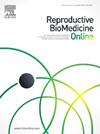Ovarian stimulation is a critical step in assisted reproductive technologies (ART), involving numerous decisions about medication protocols, dosing, and timing, which can be tailored to each patient's unique profile. According to the 2020 ESHRE Guidelines1, there are 84 recommendations overall, including 7 for pre-stimulation management and 40 for pituitary suppression. However, with variability in patient response, big data generated at in vitro fertilization (IVF) clinics, and the complexity of decision-making, few doctors have the training and experience to make the most efficient choices consistently.
Artificial Intelligence (AI) offers a promising solution, enabling individualized and optimized decision-making in ovarian stimulation. By analyzing large datasets from previous IVF cycles, AI can support fertility doctors by recommending personalized treatment plans, optimizing the number of oocytes retrieved, and improving patient outcomes.
AI has the potential to enhance several critical areas in the ovarian stimulation process:
1. Gonadotropin Dosing: AI models can predict the optimal starting dose of gonadotropins based on patient characteristics such as age, ovarian reserve, and hormone levels. This reduces the risk of over- or under-stimulation, lowering the chances of ovarian hyperstimulation syndrome (OHSS) or a failed cycle.
2. Trigger Timing: AI can analyze follicular growth and hormone levels to recommend the best time to administer the trigger shot, ensuring the retrieval of mature oocytes at the optimal time. AI's ability to provide real-time data analysis supports more precise decisions regarding when to induce ovulation.
3. Predictive Models for Success: AI tools can estimate the probability of achieving live birth (LB) with each cycle, using data from thousands of previous cycles. These predictions can help doctors provide more personalized counseling, set realistic expectations, and adjust treatment plans accordingly.
A literature review on PubMed found 19 relevant studies on the subject. Notably, Banerjee et al.3 developed an AI tool to predict live birth (LB) in the second cycle (C2) based on data from the first cycle (C1). Their model, trained on 1,676 cycles, showed LB rates of 29% for C1, 18% for C2, and 14% for C3. Of those who did not achieve live birth in C1, 71% returned for C2, while 39% dropped out. External validation with an independent dataset (2007-2008) demonstrated that the AI model predicted LB 35.5% better than age-only models, providing valuable insights for patient counseling and treatment planning.
Letterie and MacDonald4 tested a decision-support system for four critical decisions in ovarian stimulation: continuing or stopping stimulation, triggering or canceling the cycle, adjusting medication, and determining follow-up intervals. Compared to experts' decisions, the system had an accuracy of 96% for triggering or canceling cycles, although medication adjustments showed lower accuracy (82%).
Reuvenny 5 et al. conducted a retrospective study with over 9,000 ICSI and freeze-all cycles to test AI's ability to predict optimal trigger timing. They found that AI-recommended timing resulted in an average increase of 4.8 oocytes and 3.4 mature oocytes (MII) in freeze-all cycles compared to physician-led decisions. The AI system often recommended later triggers than physicians, who tended to trigger earlier.
While AI offers numerous advantages—such as objectivity, precision, standardization, automation, and time optimization—there are several barriers to its widespread adoption:
1. Data Quality and Integration: AI models rely on vast amounts of high-quality data, but variability in clinic practices, protocols, and record-keeping can hinder data standardization and integration.
2. Validation and Diversity: AI systems need validation across diverse populations to ensure accuracy and applicability. Current datasets may need to represent the global IVF patient population adequately.
3. Physician Trust and Education: For AI to be fully embraced, fertility specialists need to trust AI's recommendations and understand how they are derived. Continuous education and training on AI technologies are essential for successful clinic adoption.
4. Ethical and Regulatory Concerns: Using AI in clinical decision-making raises ethical questions, particularly regarding accountability in cases where AI-led decisions result in adverse outcomes. Regulatory frameworks must also evolve to support the integration of AI into clinical practice.
Conclusion Integrating AI in ovarian stimulation can revolutionize IVF practice, particularly in clinics with limited staff or resources. By enhancing objectivity, standardization, precision, and efficiency, AI can optimize patient outcomes and reduce variability in treatment success. However, challenges related to data quality, diversity, regulation, and physician education must be addressed to unlock AI's full potential. With the proper support, AI can empower fertility doctors to make better, more informed decisions, ultimately improving patient experiences and success rates in assisted reproduction.


